When I travel as a vegetarian to some of the more far-flung places of the world, some people always look at me aghast and question, “but what are you going to eat there?”
In all likelihood, these are probably the people who also wonder how I survive in the Western world because, in reality, eating vegetarian in distant continents is really not the struggle people perceive it to be.
Don’t misinterpret me here either, I’m not just talking about the ease of eating a vegetarian diet comprised of chips and bread.
No, I’m talking about the ability to easily eat real, healthy, vegetarian food across the globe.
And I’m talking about how this can be as much of a fun journey of discovery and delight as many other elements of your trip.
Having lived, worked and travelled in the countries of Central America for over 2 years, I can certainly vouch for the fact that I never experienced an inability to eat due to my dietary requirements! In fact, quite the opposite, I rarely stopped eating!
The only thing vegetarian travellers in Central America require is a bit of planning and creative thinking. So here are my top 10 tips to help you do just that…
Related Posts
- The Ultimate Female Packing List Central America
- 11 Things You Need to Know About Bus Travel in Central America
- 10 Important Things To Know Before Backpacking Central America
This page contains affiliate links meaning Big World Small Pockets may receive a small commission on any purchases at no extra cost to you.
#1 Frequent the Markets
The wealth of fresh fruit and vegetables available across the markets of Central America is staggering – even for a devoted herbivore like myself!
Still used as the predominant method of shopping by locals, it’s markets, rather than supermarkets, which form the backbone of people’s access to food in this continent.
As such, the markets (or mercados as they’re known in Spanish) offer a enormous array of fruits, vegetables, pulses and grains that seem to stretch for miles in many cases, extending both indoors and outdoors.
Some of my favourite markets for food shopping in Central America were Antigua market in Guatemala and San Cristobal de Las Casas market in southern Mexico, which are both huge gems of sensory assault!
Both were located near the centre of their respective towns and, like any good market, also acted as social hubs for their communities.
As a place to meet friends, to gather and to gossip, the food in these fabulous markets isn’t their only attraction, which makes frequenting them as a tourist even more wonderful.
Markets provide a great chance for you to meet local people, view local culture and engage with local cuisine, in meaningful and genuine ways, rather than through artificial tours or attractions.
Markets tend to support small-scale business and regional economies in healthy, sustainable ways, making them an even more valuable asset when you travel in this part of the world.
Just enter your details below and I'll email it you - simple!
Information will be sent to the email provided above
#2 Learn a Little Spanish
Even if you only learn how to say “I’m a vegetarian” (“Soy vegetariano/a”), getting to grips with a little of the local lingo will make finding suitable food for vegetarian travellers in Central America a lot easier.
As it’s not common in these parts, the idea of a vegetarian diet might seem confusing to locals, so saying “I don’t eat meat or fish” (“No como carne ni pescado”) is another good tactic to learn.
Even a few basic steps like this will make finding veggie-friendly food a lot easier and will also impress local people, who’ll be delighted you’ve put in some effort to being understood.
Going back to the 1st point about frequenting markets, it’s also a good idea if you learn the names for some fruit, vegetables and other common foods you’re likely to be ordering, as well as the words for various measurements like kilo, pound, more, less, half and double.
Indicative words like ‘this’ or ‘that’ will also help when you are trying to point to the foods you want from a stall.
When I first got to Central America I didn’t know a word of Spanish, so do I understand how difficult learning it can be. Check out the language app Duolingo if you want to get some Spanish on the go before you set off for your trip.
Personally, I carried a Lonely Planet Phrasebook with me at all times when I first arrived and made it a priority to try and memorise a few words each day.
Language connected with food is a great place to start learning as it’s likely to involve words you will be using everyday.
When it comes to picking up Spanish in Central America even a few basics will go a long way and believe me, the feeling of first making yourself understood is so great!
#3 Find Hostels with Kitchens
If you want to eat healthily, vegetarian travellers in Central America would do well to find places to stay that also have guest kitchens.
Many hostels will have them because they’ve learnt this is what a lot of tourists want; and while they may not be the cleanest or best-stocked in the world, even a simple kitchen, with just a gas stove and a pan or 2, can help you prepare nutritious and delicious meals with your market produce!
Throughout Central America, I always made sure I stayed in places with kitchens whenever possible, in fact in many cases this became the deciding factor when agonising over accommodation choices.
Hostelworld is a great resource in this way, as their website allows you to search, select and book accommodation which has self-catering facilities.
Brilliantly, they don’t charge you a booking fee either, so using their website certainly beats trudging around a city, heavy pack in tow, trying to find out if a particular hostel has a kitchen or not.
Do bear in mind, that you’ll have more chance of finding accommodation with self-catering facilities in the major tourist areas, as opposed to small rural towns.
However even in these locations, such as the small town of Tortuguero on the Caribbean coast of Costa Rica, I’ve often just asked nicely or paid an extra dollar and been allowed to use the owner’s or workers’ kitchen.
It certainly pays off!
#4 Take your Tupperware
At the risk of sounding like a 1950’s housewife, I would like to point out that I’m a great fan of tupperware!
So versatile as a plate, cup, bowl or storage dish, you can now get the ones with air-tight lids that have vegetarian travellers jumping up and down with delight the world over!
Ok, maybe it’s just me, but seriously taking a tupperware with you to Central America will be gold during those times you don’t have a kitchen and want to prepare a fresh fruit salad or have some leftover food that you want to take on a long bus journey.
I also suggest vegetarian travellers in Central America journey with a set of travel cutlery, which will take up very little room, yet will be very handy when prepping some healthy food away from a kitchen, on a picnic or during the wait at a bus station.
Here’s a great set of travel cutlery, which is both light-weight and stainless steel, meaning it won’t rust and it won’t weigh you down.
#5 Eat the Street
If there isn’t a market near you (unlikely, but possible) or you don’t feel like cooking (more likely and definitely more possible), the other place to get great vegetarian fare in Central America are the street food stands.
Wonderfully cheap and always plentiful, particularly in Guatemala, El Salvador and Mexico, these street stalls boast an array of food choices that are usually available any time of the day, from morning to night.
Saying that however, there is generally more choice at night, when the fritangas (street-side grills) set up their coals and cook up a storm of warm, tasty grub.
Street food stalls are also dirt cheap, and an economic way of eating for many locals who can’t afford cooking facilities.
In the northern parts of Central America, corn (or maiz as its called in Spanish) is the stable food, so vegetarians can rejoice at the ingenious number of ways this food is served up – from whole corn on the cobs, to sweet, steaming corn cakes, handmade tortillas and crispy corn breads, there really is no end to the versatility.
Other vegetarian street food favourites might include arroz con leche, a hot sweet, drink like rice pudding and tostadas, crispy corn plates that are topped with fresh guacamole, tomato salsa, beetroot and refried beans.
There’s also tamales, parcels of corn flour, filled with goodies, both sweet and savoury, wrapped in leaves and steamed or pupusas, thick, cornbread pockets, filled with melted cheese and beans and toasted on the grill.
I suggest trying them all and revelling in the cheap feast they provide!
#6 Come to the Comedors
Comedors are little mini-restaurants all over Central America, that are one notch up from street food, normally because they provide some sort of roof and area to sit down.
They are often housed within markets and I found them particularly prevalent in Nicaragua and other areas where street food stalls are less common.
Normally a little pricier by a few cents, they nevertheless provide you with cheap, vegetarian food, which is just as tasty and just as fun, providing you’re not to worried about some of it being cooked in meat fat.
I quickly learned to dispel my thoughts over this when I got to Central America, as it’s literally impossible to eat anything, outside of your own kitchen, that might not have a trace of meat juice in it, even if it’s only through a cross-contaminated fork.
There really is no getting away from this I’m afraid, so I do recommend you follow the mantra ‘what you don’t know, can’t hurt you’.
It certainly never hurt me and I actually really enjoyed a lot of great nights in comedors, which will often provide you with a cold beer and a great people-watching opportunity.
Further south in Central America, the staple food changes to rice, so expect a lot what is known as gallo pinto, a mixture of beans and rice served up throughout Nicaragua, Costa Rica and Panama.
Apparently the quality varies according to the type of bean included, but I didn’t really notice any difference.
What I do know, however, is that it’s a great staple for vegetarians, providing us with a complete set of proteins.
Normally accompanying said gallo pinto, is some tasty plantain and perhaps a block of cheese, scrambled eggs or, if you’re lucky, an incredible slice of avocado.
Yummo!
#7 Dine out for Diversity
If all the rice, beans and corn is getting to you, then don’t be afraid to treat yourself to some different types of food when you get to Central America’s major cities.
I always saved easting out as my treat and ate cheaply the rest of the time so I could enjoy some vegetarian Asian food or sushi in a restaurant in San Jose, Costa Rica or Panama City, which are by far the 2 most developed, and safest, of any capital cities in this region.
Both of San Jose and PC are home to an Asian diaspora, so you can get some fairly decent, authentic food, which really isn’t that expensive compared to back home.
Checking your guidebook beforehand for reviews of restaurants or asking at your hostel reception is a good way to get recommendations of where to go.
#8 Stock up on Less Traditional Foods When you Can
While all the local vegetarian food is tasty, it not always the healthiest, so you may want to also stock up on some western, health foods as and when you can.
Major tourist areas and cities in Central America normally provide you with these opportunities, and it’s worth travelling with your supplies in a little food bag so you can keep a bag of granola, a packet of rice cakes and some raw nuts / raisins with you at all times.
Antigua in Guatemala has a good supermarket where you can get Western food, as does Leon in Nicaragua.
As you move further south in Central America the number of ex-pats increases, so in towns that house larger populations of Westerners, such as Dominical in Costa Rica and Boquete in Panama, you’ll normally find a shop that sells gringo-friendly health foods.
Buy while you can so you can enjoy a bit of yummy health whenever you want to.
Additionally, I always pack some chia seeds and spirulina in my bag before I leave home for that added health-level!
#9 Remain Mindful of Luxury
One of the best lessons I learnt during my 2 year travels in Central America was about healthy, vegetarian food.
I always thought I was fairly unattached to luxuries, indeed I prided myself on this and being able to set up home anywhere in the world away from western comforts.
Yet during my time in Central America, particularly in the remote Corn Islands, I realised how attached I actually was to the luxury of healthy, vegetarian eating; how this was indeed a western comfort I struggled to live without.
Becoming mindful of this was a great opportunity to review and consider (again!) how lucky I am to have such choices over my diet and lifestyle.
I stayed vegetarian throughout my time in Central America, but it was certainly a lifestyle perspective that altered in my mind – when viewed as a luxury, vegetarianism became a choice, not a right and this was a useful standpoint to have during my travels in that part of the world.
#10 Relax and Enjoy
Remember travelling is all about new experiences so don’t let old habits hold you back. If you want to try new foods, do it.
And try to be brave enough to do it in the local language. Don’t worry about getting sick and don’t worry if it’s different to home.
Embrace the newness and relax into it.
Accept people’s kindness and hospitality if it’s offered and always buy avocados, they are incredible in this part of the world!
Home will come soon enough and you might then miss the simplicity of eating a delicious mango and letting the juice run all down your face!
PIN IT TO PINTEREST!

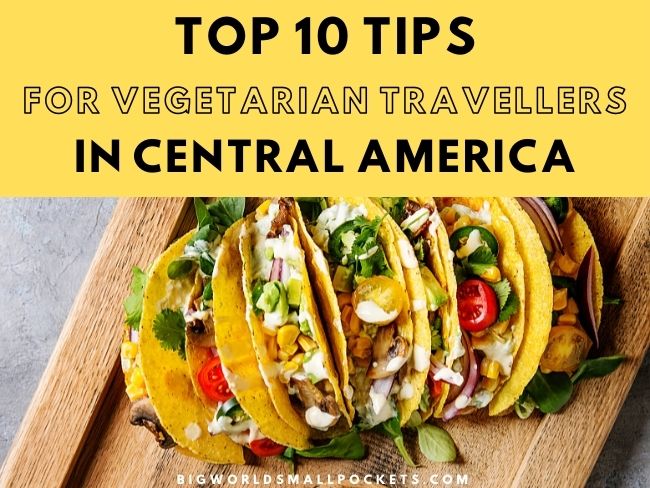
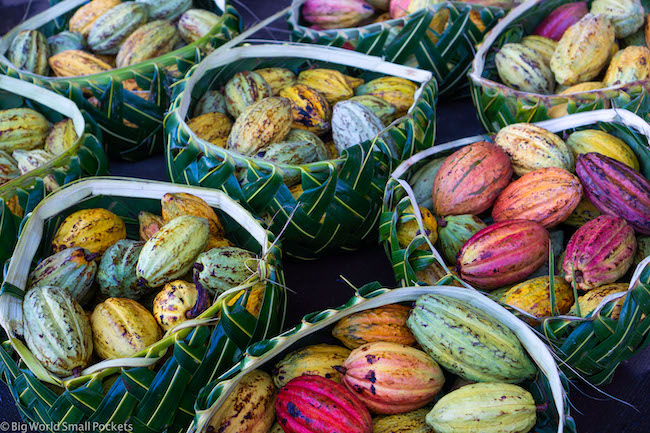
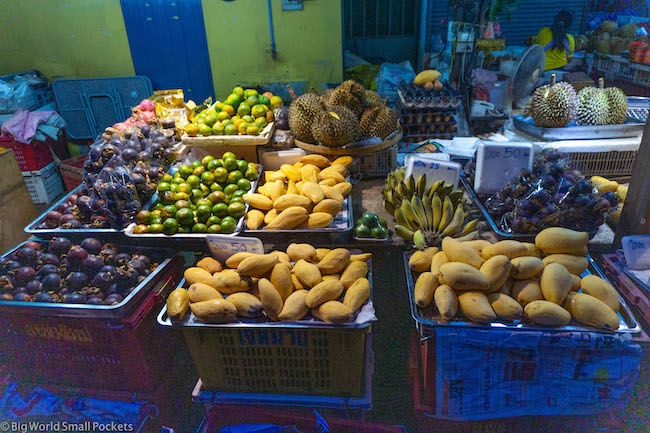
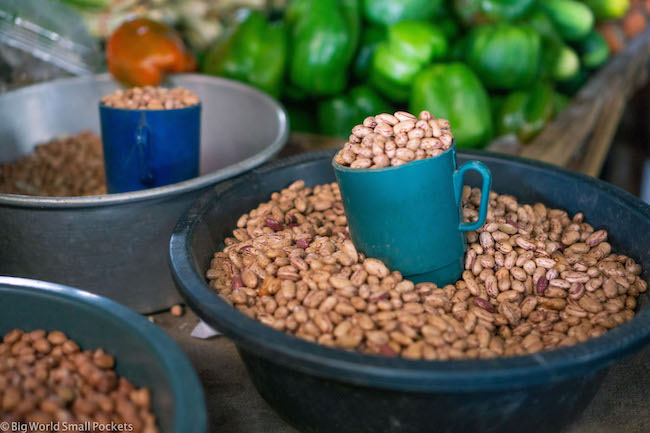
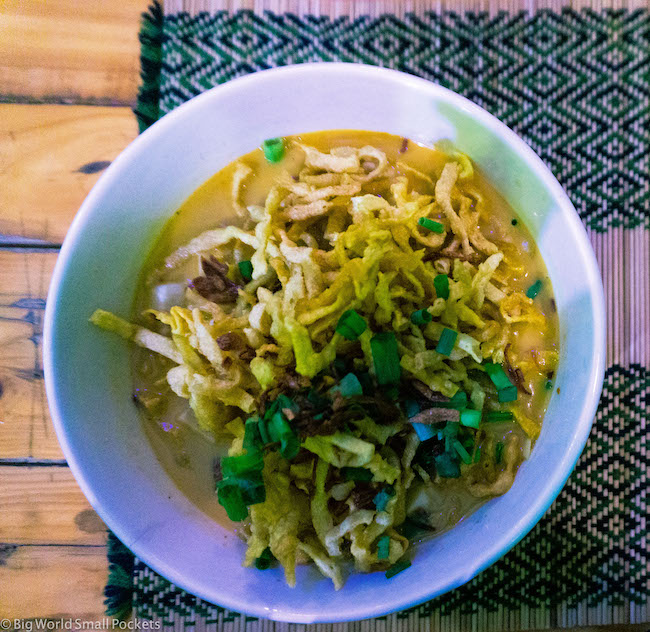
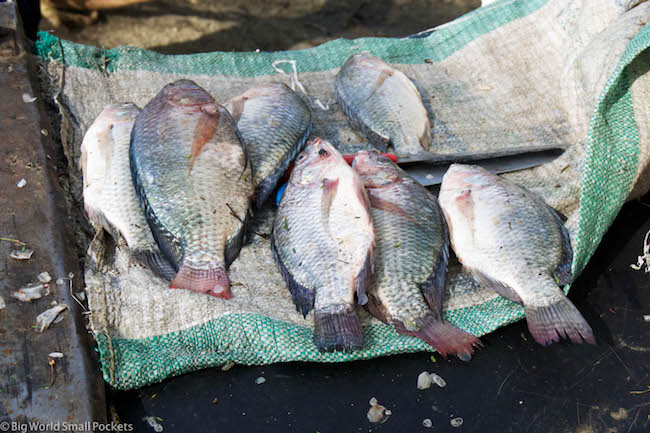
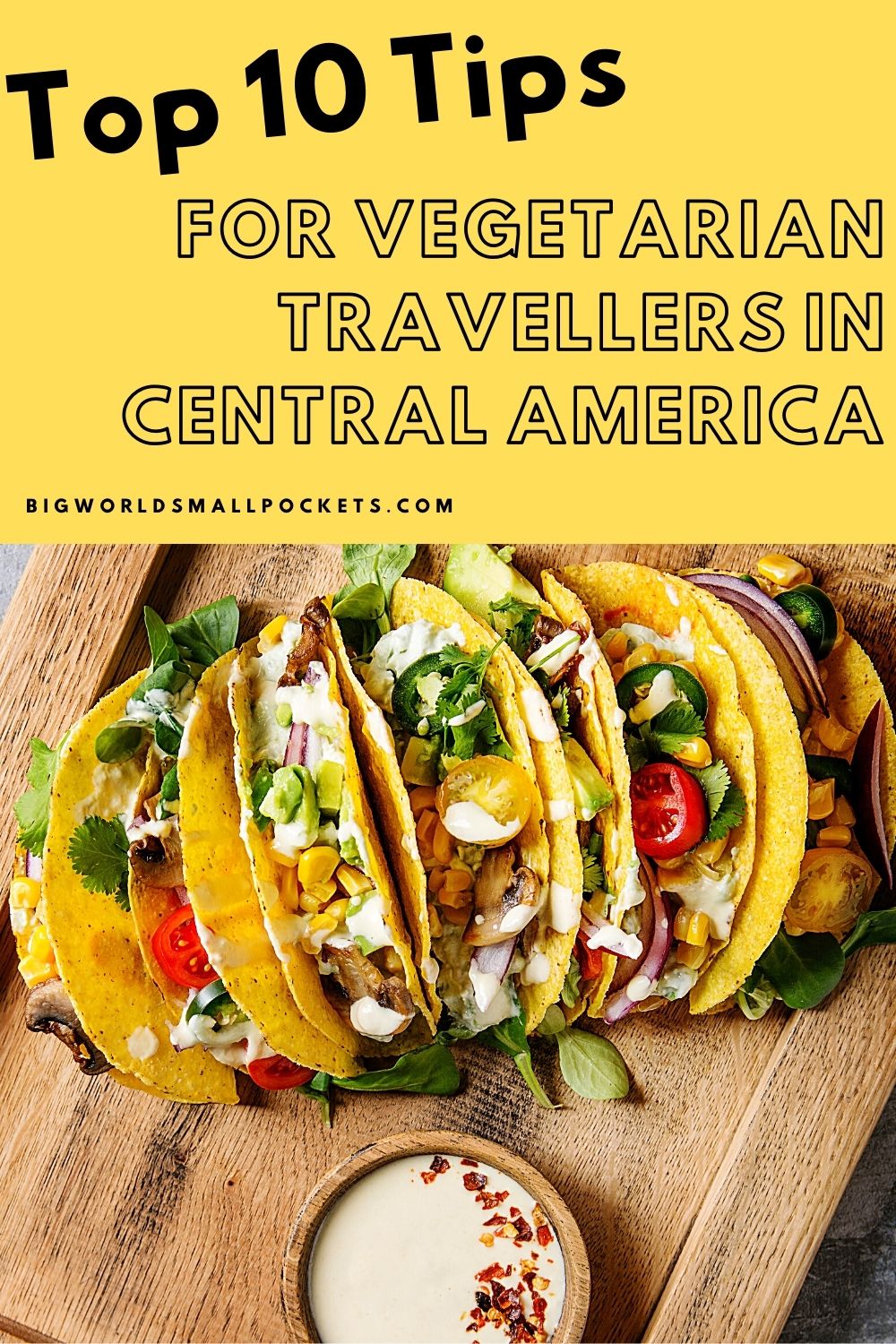
It’s great to know that Central America is so vegan and vegetarian friendly. These fruits look so appetizing and fresh! :*
Hi Agness, yes its definitely easy enough to be vegetarian there! Vegan also is possible, especially as there is very limited dairy product in the north of Central America anyway. Maybe just take some supplements with you as a vegan, because you might struggle for alternative protein aside from beans!
Love this guide. It’s great to see more people offering an insight into how easy it is to travel as a vegan or vegetarian by a combination of preparation, using facilities in hostel and airbnb kitchens – but more importantly – by talking and interacting with locals and getting the best vegan food from local cuisine.
Couldn’t agree more – glad we’re on the same track! Thanks for your comment and keep up the good work!
Thanks for the tips, Steph. I haven’t been to Central America but I’ve been to South America and lived there for a while. I found it was easy enough to be a vegetarian, but not vegan. I have been a vegetarian since I was 7 and became vegan for a while in my late teens/early 20s- but I ended up going back to just being a “regular” vegetarian while in South America. I’m sure it could have been done if I really put the effort in though.
Yes being vegan is certainly a big step up from being vegetarian, particularly when travelling, but I think it is possible. Saying that, I was only a vegetarian when I was in South America, so can’t speak from the vegan point of view. Like you said, being veggie was easy enough, but interesting you did struggle with veganism …. I can imagine it would be harder
Thanks for all of the tips. I haven’t managed to visited South or Central America yet, but I must admit, my vegetarianism did worry me a little bit. It’s good to know that it won’t be a problem.
I love spending time in food markets as well – So many colours and smells!
Awesome Karianne, you can now rest assured that vegetarianism and Latin American travel are compatible! This is even more true if you are already a market lover! Enjoy
I understand what you mean about realizing that healthy, vegetarian food is a luxury (it’s probably the one I’m most attached to as well!). Though I wish everyone is the world always had the option of eating fresh, cruelty-free foods, sometimes that just isn’t an option. Also, YES to all those markets! So many fun new fruits and veggies to discover !
So many to discover Nikita! Sadly you’re right about the fresh, healthy foods too – unfortunately just a symptom of the word we live in – and travel makes us aware of that.